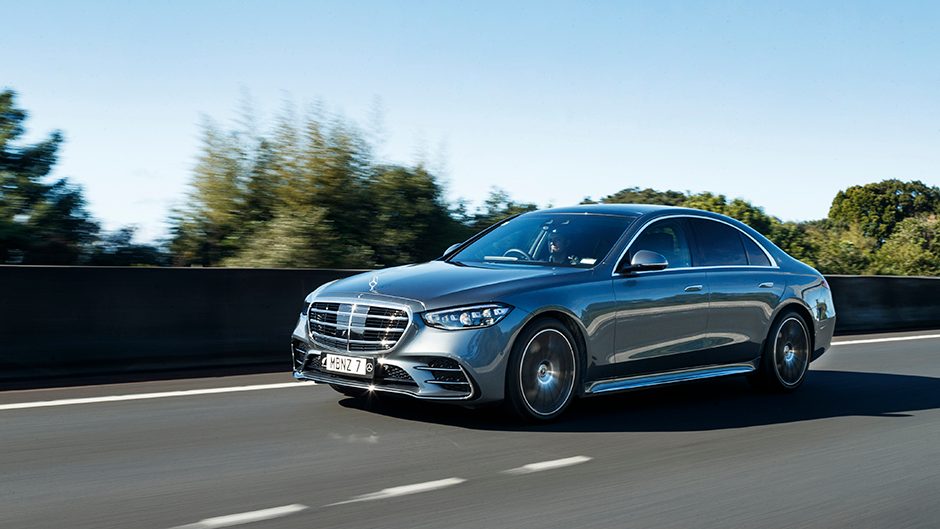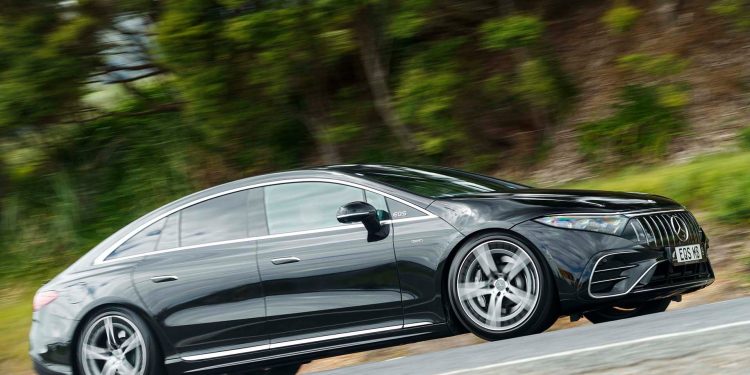Mercedes-Benz S-Class and EQS to merge in 2030
The next-generation Mercedes-Benz S-Class and EQS will become one, the German brand making the EV and combustion-engine line-up otherwise the same.
The decision to continue with ICE power into the eighth generation of the S-Class which is due out in 2030 sees a reversal of the decision to replace it with the Mk2 EQS.
However, Mercedes is ditching the EQS name. CEO Ola Källenius has confirmed that “There will be two S-Classes in the future – ICE and electric”. Both versions will share exterior and interior designs.

Read our Mercedes-AMG EQS 53 review
That said, underpinnings will be different. The S-Class EV will ride on the forthcoming MB.EA Large platform while the ICE power alternative will continue with an update of the current MRA architecture. This is similar to the situation for the G-Class duo.
The change is due to slow sales of the latest S-Class and EQS. Electric sales have fallen short of the 20 per cent budget for 2023, accounting for only 10 per cent of the two million annual M-B sales.
Moreover, the forecast that 50 per cent of the brand’s annual sales would be electric or PHEV by the end of 2025 is now out to one-half by 2030. In Europe this year the total EV car park has grown just two per cent compared with 2024. That is why Audi, Porsche and others are refocusing on ICE and hybrid cars.
Read our Mercedes-Benz S 450 review
Mercedes has given the current S-Class a lifeline, electrifying petrol and diesel models to ensure they meet emissions regulations into the 2030s.
Källenius recently confirmed that Mercedes budgeted to invest up to €14 billion this year in R&D for electromobility and advanced combustion engine technology.
The company is continuing to develop the MB.EA Large electric vehicle platform which will be used in a facelifted EQS next year.
It will likely also be used for EV successors to the E-Class, GLE and GLS.
By developing another combustion-engined S-Class this ensures the E-Class continues into a seventh generation with petrol and diesel engines. It will sell alongside an electric-powered successor to the EQE saloon.
The eighth-generation S-Class decision to make combustion-engine and electric models similar mirrors that of the BMW 7 Series and i7. The electric and ICE power models will have common bodywork but different grilles.
However, before the two S-Class models arrive, Mercedes is revising the EQS and S-Class flagships. The former gets a major technical update a year from now and the S-Class saloon is set for a 2026 facelift. The EQS is set to adopt a heavily modified version of the EVA2 platform. It gets an 800V electric architecture compared with the 400V system currently in use, meaning faster charging times. It’s expected a 10-80 per cent charge time will take just over 20 minutes on a high-powered charger.
Helping is uprated chemistry for the 118kWh battery pack. Range is set to increase by over 50km to over 850km for the most efficient model. This technology is also set to underpin the electric CLA.
Mercedes is also swapping out the existing motors for its own eATS2.0 electric motors. And a new two-speed gearbox is set to replace the current single-speed unit. This will ensure enhanced performance for the updated EQS.
Not long after, Mercedes intends to introduce the facelifted S-Class, some five and a half years after the seventh-generation model went on sale. This is two years later than usual for the update and reflects the extended life cycle planned for this car.
The update will have a fresh face with a bolder chromed grille and a reworked headlight design. Inside, an MBUX Superscreen will become an option, while S-Class gets an updated MB.OS operating system.
The twin-turbocharged 4.0-litre V8 will gain 48V mild-hybrid technology while level-three Drive Pilot autonomous driving capability should ensure hands-off driving to speeds of more than 100km/h.





